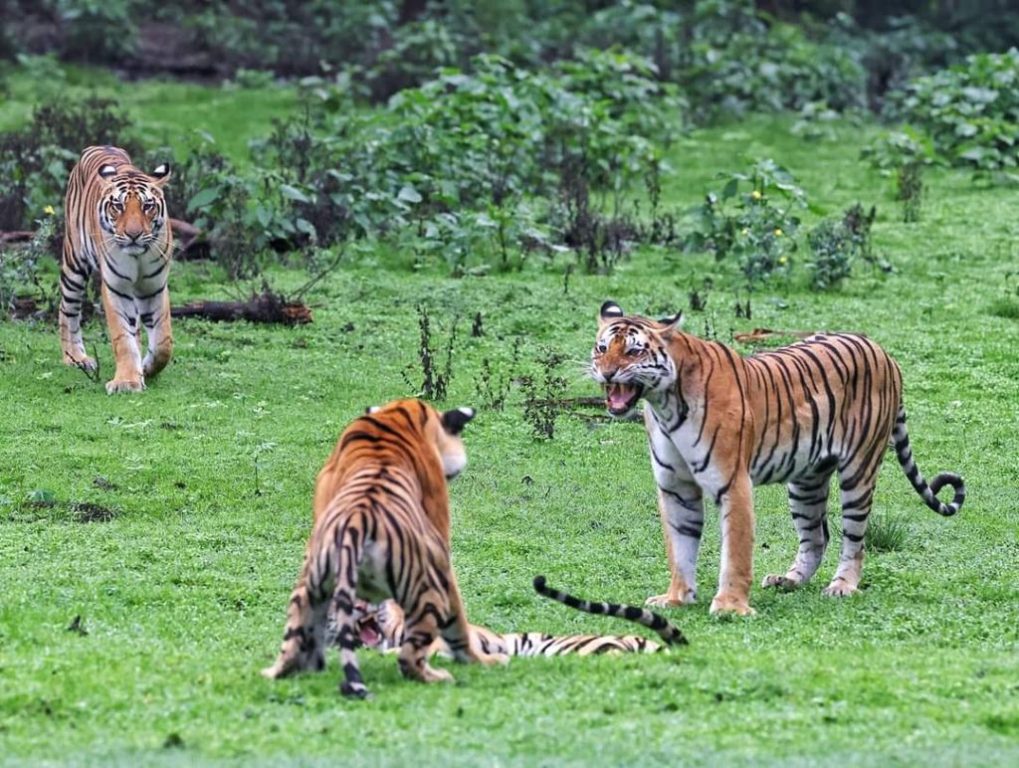It’s not that tigers have started attacking human beings only now. They used to attack even during ancient times, centuries ago. Also, such incidents are rarely reported, and few isolated incidents can’t set examples. Not only tigers, many other wildlife species like lion, elephant, snake, monkey, bear, wild boar, etc., also attack human beings. It is a complex system of human-wildlife conflict. With our increased population, we, human beings, have invaded many of the natural habitats of wildlife.
If we can have a better management plan and a modern tracking and monitoring mechanism in place, we can easily handle such conflict situations. Besides this, the bigger question is maintaining the ecosystem, and for that, efforts towards conservation and protection of the tiger is important.
VISIONARY PROJECT
Towards this objective, ‘Project Tiger’ was started way back in 1973 with a vision to have a viable population of the Royal Bengal Tiger in its natural habitats, protecting it from extinction, and preserving areas of biological importance as natural heritage of India that represent the diversity of ecosystems across the tiger population range in the country.
We have come a long way and achieved considerably to ensure the success of this visionary project. Now, we can proudly say that India has a viable population of Royal Bengal Tigers. However, it’s not only the tigers which are getting protected by this project, it’s the entire forest ecosystem and the associated biodiversity that are being protected as a whole. In any forest ecosystem, we can’t separate out a single species of either flora or fauna for its protection. The tiger being the flagship species of the forest, its protection is highly essential for the survival of the whole forest ecosystem.

As countrymen, we take pride in having more than 90% of the world population of the charismatic Royal Bengal Tiger. Though the number of tigers have increased significantly, in order to protect the whole existing forest ecosystem and the other associated wildlife species; to have continued research on scientific and social issues associated with human-wildlife conflicts; and to manage the tiger reserves which have been created under this project as per the management plan, the Project Tiger will always be relevant for ever and ever.
PLAN FOR NEXT 50 YEARS
We can easily say that we have achieved the physical target of doubling the population of Royal Bengal Tigers by 2020. However, it’s not only the physical number which matters. The Protected Areas network of the country is only around 5% of the total forest area, and within that, tiger habitats at present is less than 1% of this total forest area. There are as many potential forest areas and Protected Area networks adjacent to the existing tiger habitats (which used to be tiger habitats centuries before), wherein the tigers can find new habitats and spread over. As we have read during our childhood days, tiger is the real King of Jungle, or in other words, it’s like a Headman in the Forest Family. Without them, the forest looks empty. Accordingly, if consensus arises among the scientific community, we may fix another physical target for the next 50 years, with a proper comprehensive management plan, associated with scientific research, for maintaining sustainable tiger population in all the tiger habitats-based Protected Area networks.
(This article has been written by IFS officer Damodar A. T., who is the secretary of Environment and Forests, Lakshadweep)


































